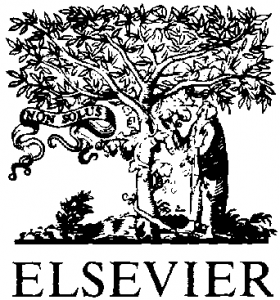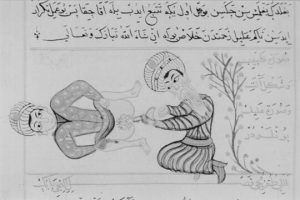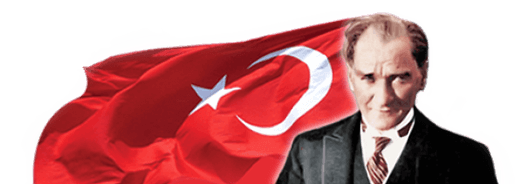
NAMES IN GENITOURINARY SURGERY
AYHAN VERIT, SAHIN AKSOY, HASAN KAFALI, AND F. FERDA VERIT
UROLOGY 62(4): 776–778, 2003
DOI: 10.1016/S0090-4295(03)00004-9
Although surgical practice is as old as mankind, surgical techniques evolved slowly through out the centuries. Serefeddin Sabuncuoglu (1385 to 1470 AD) is the author of the first illustrated surgical textbook in the Turkish-Islamic literature, namely Cerrahiyyet’ul-Haniyye (Imperial Surgery), which was written in Turkish. Sabuncuoglu, a pioneer of surgery, developed numerous original surgical techniques. Three original handwritten copies of Sabuncuoglu’s book were examined by Uzel1 and were republished in 1992.
Serefeddin Sabuncuoglu lived in the city of Amasya in central Anatolia (now the Turkish Republic) during the brilliant Ottoman times (1453 to 1579). He had worked for 14 years in the Amasya Hospital as chief physician, a position held only by the masters. There were some renowned physicians among his relatives, before and after his period.1 His book had been written in the year 1465, when he was 80 years old. After hundreds of years Cerrahiyyet’ul-Haniyye (Imperial Surgery) was discovered by Suheyl Unver in the early 1930s, about 10 years after the collapse of the Empire.1,2 Mucerrebname (The Book of Experiences) and the Translation of Akrabadin (Medical Formulas) are the two famous examples of the known seven books of Serefeddin Sabuncuoglu.1 He was not only a physician but also a calligrapher and teacher of medicine.
The book cites Greek, Arabic, and Persian works and includes the author’s own colored miniature drawings of the operative procedures. There are three handwritten copies of Sabuncuoglu’s book, of which he originally wrote two. One copy was written later in the 18th century. Uzel reported that each copy is different from the others, and some parts are suspected to be missing.3–5 The book consists of three chapters (cauterization treatments, surgical procedures, and fractures and dislocations), with 193 known sections, which were organized as organ confined, dealing with all types of surgery, including urology. We examined 10 sections of Cerrahiyyet’ul-Haniyye for content related to pediatric urologic considerations, genital surgery, and bladder manipulations, such as urinary retention and intravesical therapy.
MANIPULATIONS ON THE BLADDER
URINARY RETENTION
This section of Imperial Surgery deals with the treatment of urinary retention and was written step-by-step from noninvasive to invasive procedures and can be considered an example of pioneer endourology.1 The author first described the etiologies of urinary retention and mentioned bladder calculi, coagulum and pus in the bladder, and the accumulation of excess tissue in the urinary tract. Although he did not specify this excess tissue, it can be speculated as a neoplasia such as prostatic hyperplasia or carcinoma. If the medications were ineffective, he suggested first, a maneuver for increasing intraabdominal pressure by having someone manipulate the obstructing material, such as calculi, away from the bladder outlet.
The next step was a silver luminal catheter, one side of which was thin and the other side was wide to allow a string inside. He devised this instrument, which might be accepted as a primitive model of a contemporary bladder calculi extractor. It was composed of a silver catheter and a basket-like structure that was formed by knotted cotton attached to the middle of the two-line cotton string. Free tips of the string were passed through the catheter and the device was ready for repetitive attempts. Insertion of this through the urethra was described in great detail and was much like rigid endoscopy today. The mandatory use of lubricants and awareness of the anatomic curving of urethra were emphasized to avoid injury (Fig. 1).

FIGURE 1. Extracting some material from the bladder with a special catheter with a string inside that on one side had a cotton button. Reprinted, with permission of the Turkish Historical Society, from Uzel I: Cerrahiyet’u¨l Haniyye, 1st ed. Ankara, Tu¨ rk Tarih Kurumu Yayınları, 1992.
BLADDER IRRIGATION
For the bladders with ulceration or coagulum, Sabuncuoglu suggested irrigation with an apparatus that was like a primitive syringe made of a plant something like a squash that was illustrated and described in detail. Irrigation of the bladder with warm water and some medications using a catheter can be considered a clear example of intravesical therapy.
OPERATIONS ON THE GENITALIA
In these sections,1 the author described surgery for hydrocele and unilateral/bilateral varicocele, as well as orchiectomy-penectomy for castration. Concerning varicocele, he described its appearance as a bunch of grapes in the scrotum and paid surgical attention to effective ligation of the proximal-distal spermatic vessels and the importance of removing the “dark blood” between these veins. As a Muslim physician with ethical concerns, Serefeddin Sabuncuoglu was strongly opposed to the castration of men; however this section was included in the book “just for the completion of the book, not to leave it incomplete,” as he emphasized. In this technique, he offered orchiectomy and penectomy in three stages of unilateral orchiectomies followed by penectomy to allow safe recovery.

FIGURE 2. Catheterization of urethra with a tin tube. Note the curiosity of Serefeddin Sabuncuoglu for looking inside the urethra through the tube. Does the scene seem like the endoscopic procedure? Reprinted, with permission of the Turkish Historical Society, from Uzel I: Cerrahiyet’u¨ l Haniyye, 1st ed. Ankara, Turk Tarih Kurumu Yayınları, 1992.
PEDIATRIC UROLOGY
Whereas Galen and al-Zahrawi used leaden sounds with obliterated lumens, Sabuncuoglu used a tin sound with a patent lumen for meatal stenosis, imperforated meatus, hypospadias, and epispadias to allow urinary diversion and dilation for a few days after the dilation of the urethra6 (Fig. 2). In the description of hypospadias, he pointed out how this pathologic feature interfered with normal micturition or unusual extravaginal deposition of semen, which was considered shameful in those days. The treatments of phimosis, penile warts, and circumcision and its complications were also described in detail. Although Paulus of Aegina and al-Zahrawi had already described hermaphroditism,6 Sabuncuoglu not only discussed and classified it in detail, but also illustrated the abnormality in an operation with a tabiba (female physician). This is particularly important in the history of medicine, because women were allowed to practice only as midwives or nurses in the West in those centuries.
COMMENT
Modern medical practice is the culmination of efforts of countless known and unknown physicians and many different civilizations, such as Egyptian, Greek, Roman, Persian, and Indian. During the “dark ages” of Europe, between the 7th and 13th centuries, the continuity and innovation of medical practice was hosted by people called Arabs and Muslims.9 That period, unjustifiably, has been commonly neglected and passed over when acknowledging many standard achievements in medical history. Serefeddin Sabuncuoglu lived in the 15th century while Europe was newly waking up from its dark ages, and he was a milestone in the development of medical practice.
Sabuncuoglu, a splendid and courageous surgeon, operated throughout the human body well before sterility and anesthetic management existed in the modern manner. He used a combination of mandrake root and almond oil for general anesthesia and analgesia.10 He frankly disclosed the problems he faced during his surgical practice and did not hesitate not only to criticize himself but also to cite his senior masters, Galen, Hippocrates, and al-Zahrawi (Albucasis).11 His textbook Cerrahiyyet’ul-Haniyye (Imperial Surgery), was dedicated to Sultan Mehmed the Second (The Conqueror), the great Ottoman emperor, and was a modification with original contributions from al-Tasrif (Textbook of Surgery) of Albucasis (1013 to 1106 AD).6,12 Despite his merits, Sabuncuoglu was not widely known in his era, and his book was ignored until the 1930s, because it was written in Turkish rather than Arabic or Persian, the accepted scientific languages of that time.12 Although his miniatures do not have great artistic value, it is important to emphasize that they were drawn in a modest but serious spirit according to Islamic rules. It was generally believed in the Islamic World that painting, especially the paintings of human figures, was disliked. However, it is argued that Prophet Muhammad did not ban the painting himself. It was just the interpretation of some religious scholars after the 9th century.13
In some of his miniatures, for the gynecologic procedures, some female physicians or medical students (that he called Tabiba) were present, rather than midwives as favored by al-Zahrawi. Also, he did not hesitate to show the details of these procedures in his drawings of female patients.6 In his other book, Mucerrebname (The Book of Experiences), he mentioned that he performed innovative procedures first on animals and then on himself, and finally on his patients.1,11,14
Sabuncuoglu tried to reach the Palace of Sultan Mehmed, “The Conqueror,” to devote his master-piece to him; however, he was most probably impeded and could not get the imperial reward he wished.11
The history of surgery is as old as humans, and Serefeddin Sabuncuoglu was one of the innovators in urologic work. One cannot help but look with admiration on the way Sabuncuoglu handled his responsibility toward humans. He not only preserved, but also added, to earlier achievements in medicine. Serefeddin Sabuncuoglu was a pioneer
surgeon and medical writer still to be remembered after 600 years.
REFERENCES
1. Uzel I: Cerrahiyet’u¨l Haniyye, 1st ed. Ankara, Turk Tarih Kurumu Yayınları, 1992 (in Turkish).
2. Solak V, and Cek M: History of urology in Turkey, Section I, the history of urology in the European countries, in Mattelaer J (Ed): De Historia Urologiae Europaeae. EAU Historical Committee European Association of Urology, D/1999/ 0222/02, vol 6, p 69.
3. Sabuncuoglu S: Cerahiyet al-Haniye, Turkish suppl, Ms. No. 693. Paris, Bibliotheque National, 15th century.
4. Sabuncuoglu S: Cerahiyet al-Haniye, Ms. No. 79, Istanbul, Fatih Millet Library, Ali Emiri Section, 15th century.
5. Sabuncuoglu S: Cerahiyet al-Haniye, Ms. No. 35, Istanbul University, Library of Institute of History of Medicine, Faculty of Medicine, 15th century.
6. Buyukunal C, and Sari N: Serefeddin Sabuncuoglu, the author of the earliest pediatric surgical atlas: Cerrahiye-i Il-haniye. J Pediatr Surg 26: 1148 –1151, 1991.
7. Aksoy S: Tarih boyunca tedavi edici rolünde Batı’da kadın (women in the West in the role of healer throughout the history). Sendrom 13: 140 –142, 2001 (in Turkish).
8. Wear A: Medicine in early modern Europe, 1500 –1700, in Conrad LI, Neve M, Nutton V, et al (Eds): The Western Medical Tradition: 800 BC to AD 1800. Cambridge, Cambridge University Press, 1995, pp 215–362.
9. Conrad LI: The Arab-Islamic medical tradition, in Conrad LI, Neve M, and Nutton V, et al (Eds): The Western Medical Tradition: 800 BC to AD 1800. Cambridge, Cambridge University Press, 1995, pp 93–138.
10. Batirel HF, and Yuksel M: Thoracic surgery techniques of Serefeddin Sabuncuoglu in the fifteenth century. Ann Thorac Surg 63: 575–577, 1997.
11. Bekraki A, Gorkey S, and Aktan AO: Anal surgical techniques in early Ottoman period performed by Serefeddin Sabuncuoglu. World J Surg 24: 130 –132, 2000.
12. Elmaci I: Color illustration and neurosurgical techniques of Serefeddin Sabuncuoglu in the 15th century. Neurosurgery 47: 951–954, 2000.
13. Creswell KAC: The lawfulness of painting in early Islam. Islamic Culture 25: 218 –225, 1950.
14. Sabuncuoglu S: Mucerrebname. Ms. No. 3229, Istanbul, Suleymaniye Library, Ayasofya Section, 15th century.
From the Departments of Urology, Medical Ethics and History of Medicine, and Obstetrics and Gynecology, Harran University School of Medicine, Sanliurfa
Reprint requests: Ayhan Verit, M.D., Department of Urology, Harran University Tip Fakultesi Hastanesi, Sanliurfa Tr-63100
Submitted: July 12, 2002, accepted (with revisions): December 17, 2002

